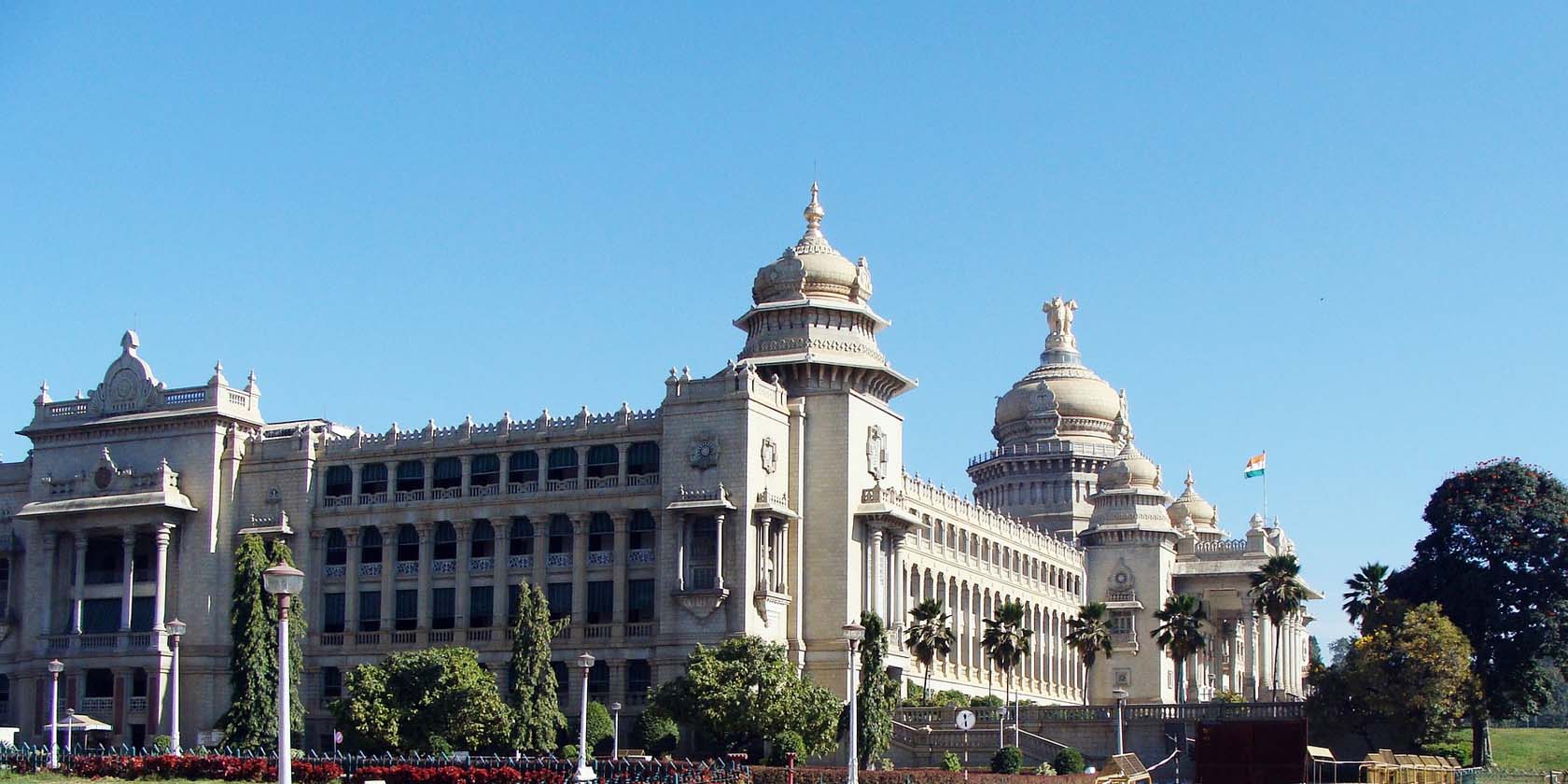Bangalore officially known as Bengaluru is the capital and the largest city of the Indian state of Karnataka. Located in southern India on the Deccan Plateau, at a height of over 900 m (3,000 ft) above sea level, Bangalore is known for its pleasant climate throughout the year. Its elevation is the highest among the major cities of India.
The city’s history dates back to around 890 CE, in a stone inscription found at the Nageshwara Temple in Begur, Bangalore. The Begur inscription is written in Halegannada (ancient Kannada), mentions ‘Bengaluru Kalaga’ (battle of Bengaluru). It was a significant turning point in the history of Bangalore as it bears the earliest reference to the name ‘Bengaluru’. In 1537 CE, Kempé Gowdā – a feudal ruler under the Vijayanagara Empire – established a mud fort considered to be the foundation of modern Bangalore and its oldest areas, or petes, which exist to the present day.
After the fall of Vijayanagar empire in 16th century, the Mughals sold Bangalore to Chikkadevaraja Wodeyar (1673–1704), the then ruler of the Kingdom of Mysore for three lakh rupees. When Haider Ali seized control of the Kingdom of Mysore, the administration of Bangalore passed into his hands.
The city was captured by the British East India Company after victory in the Fourth Anglo-Mysore War (1799), who returned administrative control of the city to the Maharaja of Mysore. The old city developed in the dominions of the Maharaja of Mysore and was made capital of the Princely State of Mysore, which existed as a nominally sovereign entity of the British Raj. In 1809, the British shifted their cantonment to Bangalore, outside the old city, and a town grew up around it, which was governed as part of British India.
Following India’s independence in 1947, Bangalore became the capital of Mysore State, and remained capital when the new Indian state of Karnataka was formed in 1956. The two urban settlements of Bangalore – city and cantonment – which had developed as independent entities merged into a single urban centre in 1949. The existing Kannada name, Bengalūru, was declared the official name of the city in 2006.
Bangalore is widely regarded as the “Silicon Valley of India” (or “IT capital of India”) because of its role as the nation’s leading information technology (IT) exporter. Indian technological organisations are headquartered in the city. A demographically diverse city, Bangalore is the second fastest-growing major metropolis in India. Recent estimates of the metro economy of its urban area have ranked Bangalore either the fourth- or fifth-most productive metro area of India.
In a recent survey, conducted by the global HR consultancy Mercer, Bangalore was voted the most liveable city in India, beating all other Indian cities.In terms of cleanliness, Bangalore ranks 12th in India.
Top 10 Tourist attractions to see in Banaglore
- Lalbagh Botanical Garden
- Bangalore Palace
- Cubbon Park
- Tipu Sultans Summer Palace
- Vidhana Soudha
- Vishveshwarayya Museum
- Bannarghatta National Park
- Nandi Hills
- Bull Temple
- Indian Music Experience Museum

